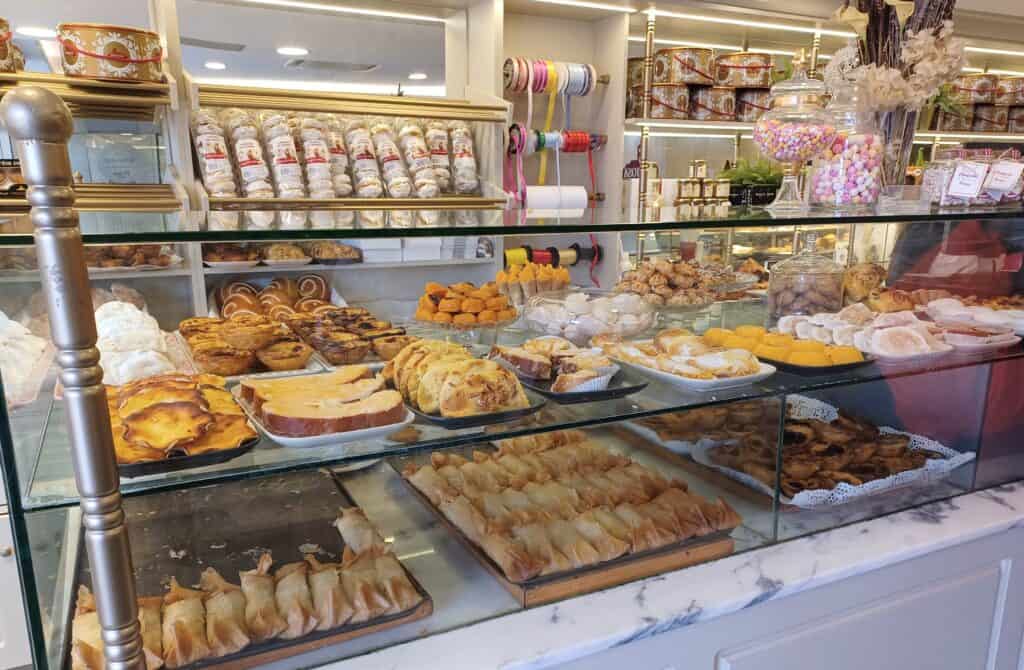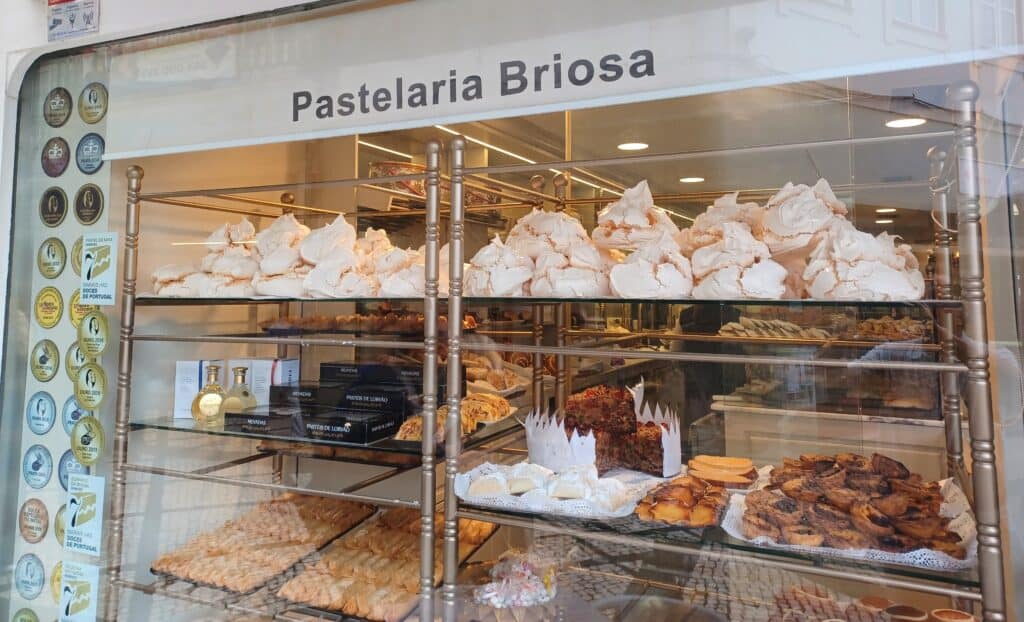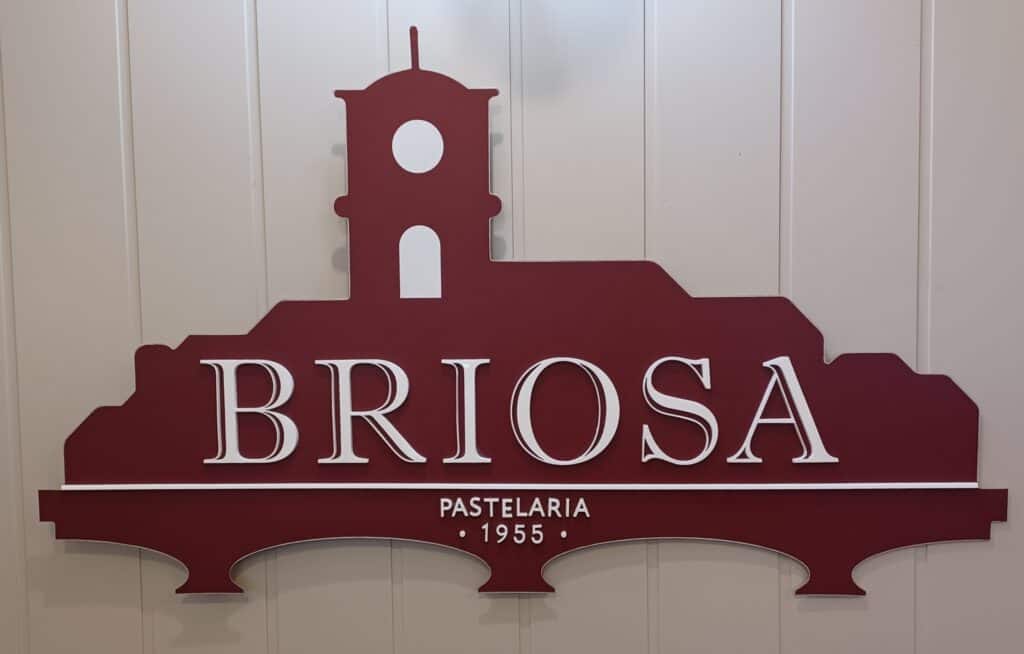A delicious pastry from the university town of Coimbra, Portugal
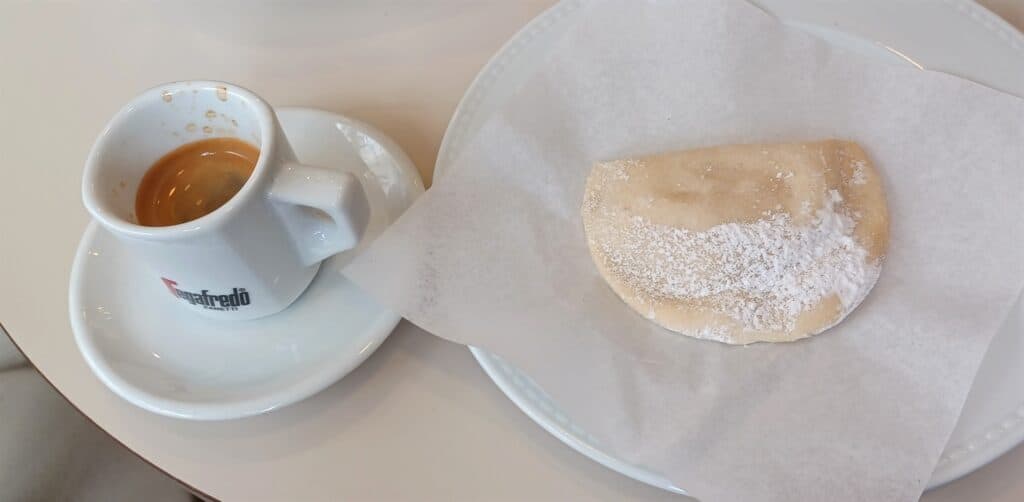
Pastel de Santa Clara origin story
The Monastery of Santa Clara-a-Velha (Old St. Clare Monastery) was originally built in the 14th century along Coimbra’s Mondego River. and consecrated in 1330 CE. But, the next year, the church was flooded when the Mondego topped her banks.
The monastery continued to flood regularly so the nuns raised the floor in the buildings. Later, in the 17th century, an elevated walkway was built to the church. But, a few years later, King João IV ordered the church closed and a new church, The Monastery Santa Clara a Nova (Saint Clare the New Monastery), was built. Luckily, this church was built on higher ground.
There’s a story you’ll hear everywhere you go in Portugal. I’ve also heard the same story in France as well. It is said that the nuns used egg whites to starch their habits. As a result, they had more egg yolks left over than they knew what to do with. So, they started baking with them.
In Portugal, that has resulted in a massive number of different custard tarts. Many of them are similar to Lisbon’s Pastel de Nata. Of course, there are lots of things you can do with custard and there’s lots of variations in the kinds of tarts you can get in Portugal.
Nuns at the monastery in Coimbra started making the Pastel de Santa Clara as far back as the 16th century. Much later, in the 19th century, the nuns started selling pastries to the local university students, and they exploded in popularity.
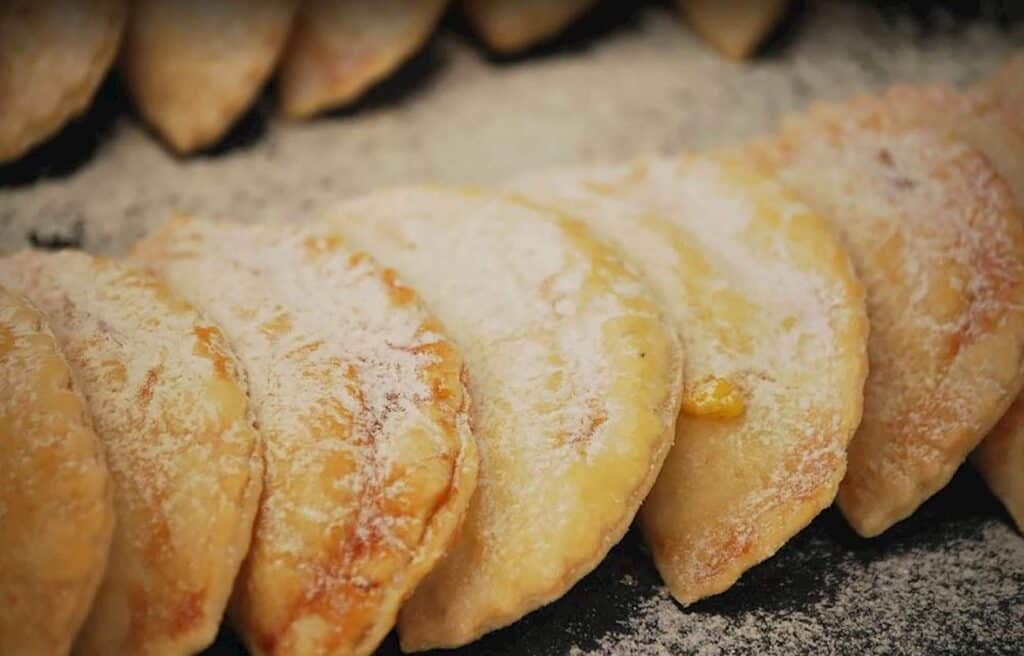
The Pastel de Santa Clara has a custard filling. But, the difference is the that ground almonds are added to the custard.
In addition, the dough isn’t flaky like a phyllo or the Pastel de Nata crust. Instead, the pastry dough is rolled out and cut into circles. The custard is placed in the middle and the dough is folded over to create a half-moon shape.
The Pastel de Santa Clara is baked and then sprinkled with powdered sugar. Divine!
Where to Get a Pastel de Santa Clara
Pastelaria Briosa is probably the most famous bakery in Coimbra. They’ve been around since 1955 and are responsible for reviving the Pastel de Santa Clara’s popularity. You can get a pastry to go, but the interior of the bakery is delightful, so sit down and enjoy a Pastel de Santa Clara and a coffee.
Pastelaria Venus is a bit outside the center of town (a little over a mile from the library), but they also have a very good Pastel de Santa Clara.
Visiting Coimbra
Coimbra is about halfway between Lisbon and Porto. The train is the best way to get to Coimbra with high speed service running several times a day.
In addition to getting a delicious Pastel de Santa Clara, you’ll probably want to visit Coimbra University, perched high on a hill in the city. It’s the oldest university in Portugal and boasts the Biblioteca Joanina (Joanine Library), a 300 year old library considered one of the most beautiful in the world and could be something right out of Harry Potter.

You can also visit the Monastery of Santa Clara-a-Velha (Old St. Clare Monastery) as it has recently been restored and is open for visits. The Monastery Santa Clara a Nova (Saint Clare the New Monastery) is also open to visitors.
About the Author

Brent Petersen is the Editor-in-Chief of Destination Eat Drink. He currently resides in Setubal, Portugal. Brent has written the novel “Truffle Hunt” (Eckhartz Press) and the short story collection “That Bird.” He’s also written dozens of foodie travel guides to cities around the world on Destination Eat Drink, including in-depth eating and drinking guides to Lisbon, Porto, Sintra, Monsaraz, and Evora in Portugal. Brent’s podcast, also called Destination Eat Drink, is available on all major podcasting platforms and is distributed by the Radio Misfits Podcast Network.

